Physical Address
304 North Cardinal St.
Dorchester Center, MA 02124
Because of the frequency of skin involvement in systemic diseases, cutaneous manifestations often prove helpful in establishing the correct diagnosis
Skin signs of systemic disease can be specific, e.g. cutaneous lupus, cutaneous sarcoidosis, in part because of associated histologic features, while others are best described as suggestive, e.g. pyoderma gangrenosum, acquired ichthyosis
Cutaneous disease can serve as the initial manifestation of a systemic disorder, including an internal malignancy
Skin disease is often associated with internal manifestations , e.g. psoriatic arthritis, and there are many cutaneous disorders that are traditionally associated with systemic disease. For example, rheumatologic disorders frequently have skin manifestations, as do infectious diseases and endocrinopathies. When one examines many of the disorders that are discussed elsewhere in this text, it becomes clear that isolated dermatologic disease is relatively uncommon. A detailed review of all dermatologic signs of internal disease is beyond the scope of this chapter. Rather, representative disorders are discussed individually, while the remainder are reviewed via tables that contain information relevant to dermatologists. Disorders are grouped on the basis of affected organ systems.
The spectrum of disorders traditionally considered to be cutaneous rheumatology includes: lupus erythematosus ( Ch. 41 ); dermatomyositis ( Ch. 42 ); systemic sclerosis ( Ch. 43 ); vasculitides ( Ch. 24 ); and miscellaneous disorders. Miscellaneous disorders usually include: rheumatoid arthritis ( Ch. 45 ), reactive arthritis (formerly Reiter disease) ( Ch. 8 ), psoriatic arthritis ( Ch. 8 ), Behçet disease ( Ch. 26 ), pyoderma gangrenosum ( Ch. 26 ), Sweet syndrome ( Ch. 26 ), bowel-associated dermatosis–arthritis syndrome ( Ch. 26 ), Kawasaki disease ( Ch. 81 ), relapsing polychondritis ( Ch. 45 ), and several of the autoinflammatory disorders (see Table 45.7 ).
Cutaneous conditions reported in patients with rheumatoid arthritis are summarized in Table 53.1 ( Figs 53.1–53.5 ) . Dermatologists should be particularly careful in this group of patients to couple laboratory evaluation with a comprehensive cutaneous examination, including all mucosal surfaces, nails, nail folds, and hair. Clinical criteria are published for the diagnosis of many of these disorders; dermatologists should be familiar with these criteria and incorporate them into a focused, thorough history, which includes relevant negatives. It is very helpful to consider the clinicopathologic basis and pathogenesis of cutaneous lesions. For example, patients with systemic lupus erythematosus can have different types of photodistributed lesions with an interface histopathology, e.g. discoid, subacute, poikilodermatous, and they have different implications with regard to systemic disease. Such lesions are also treated differently than those caused by vessel-based pathology, e.g. small or larger vessel vasculitis.
| CUTANEOUS MANIFESTATIONS OF RHEUMATOID ARTHRITIS | |
|---|---|
| Condition | Features |
| Palisading granulomas | |
| Rheumatoid nodules |
|
| Interstitial granulomatous dermatitis (IGD) and palisaded neutrophilic & granulomatous dermatitis (PNGD) | |
| Neutrophilic dermatoses | |
| Rheumatoid neutrophilic dermatitis (rheumatoid neutrophilic dermatosis) |
|
| Sweet syndrome and pyoderma gangrenosum (PG) * |
|
| Neutrophilic lobular panniculitis |
|
| Vasculitis and vascular reactions | |
| Bywaters lesions |
|
| Rheumatoid vasculitis |
|
| Intravascular/intralymphatic histiocytosis |
|
| Erythema elevatum diutinum |
|
| Complications of therapy for RA | |
| NSAIDs |
|
| Methotrexate |
|
| Methotrexate ≫ TNF inhibitors |
|
| TNF inhibitors |
|
* “PG-like” leg ulcers are a feature of Felty syndrome, which is characterized by the triad of neutropenia, splenomegaly, and RA; Felty syndrome may be associated with T-cell large granular lymphocyte leukemia.
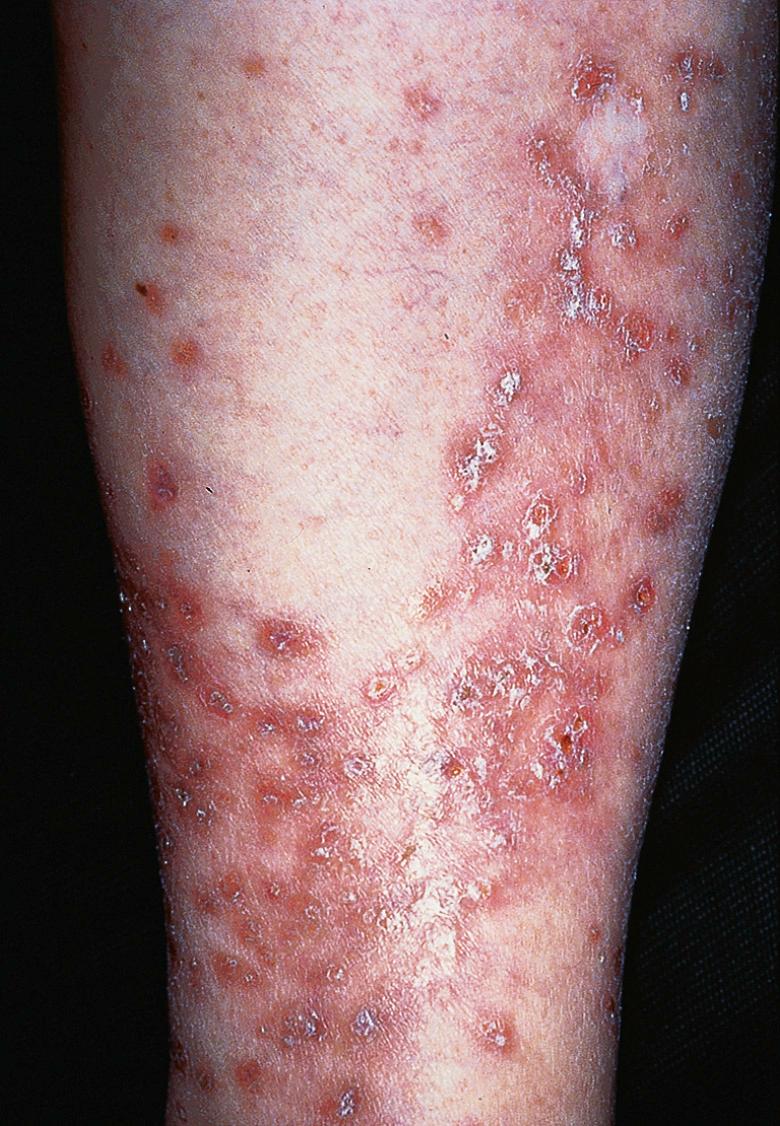
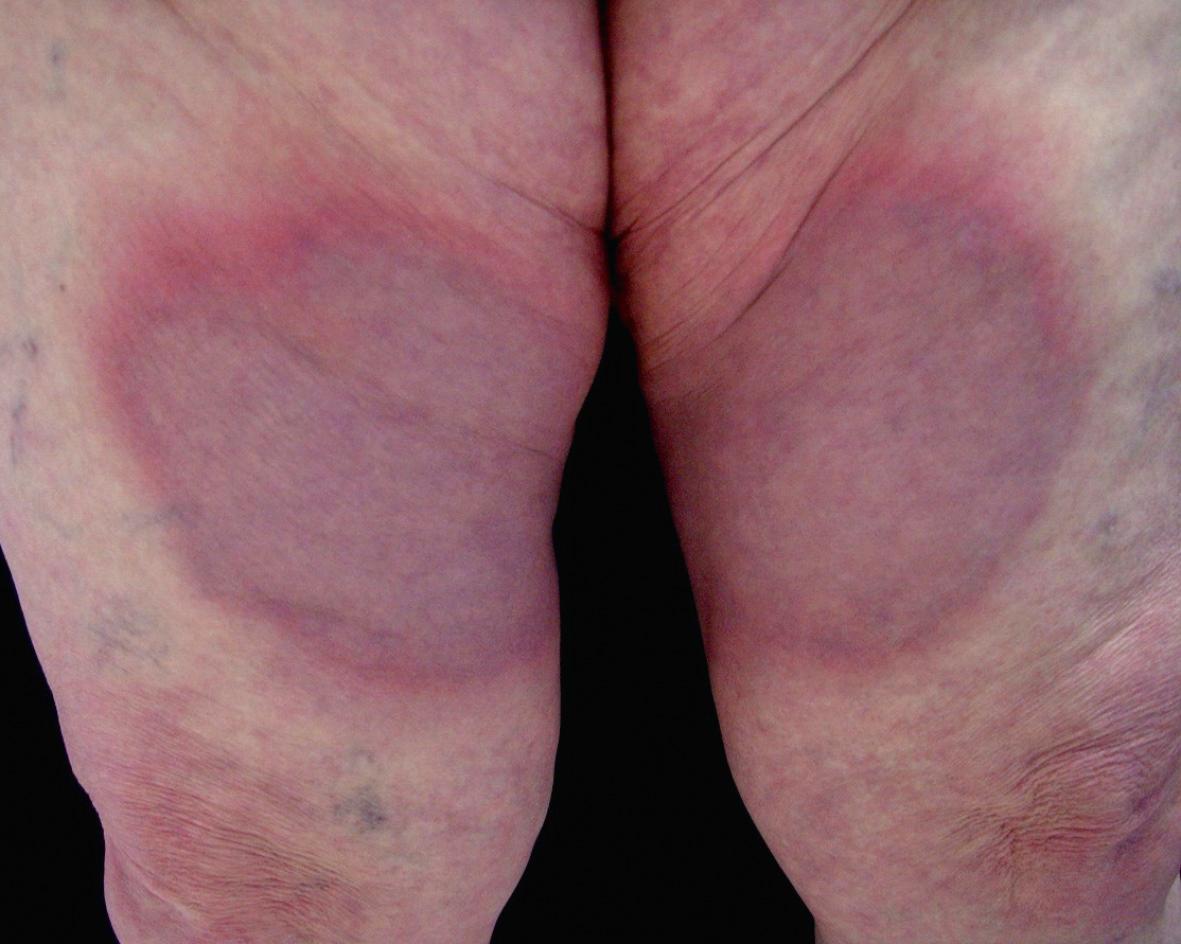
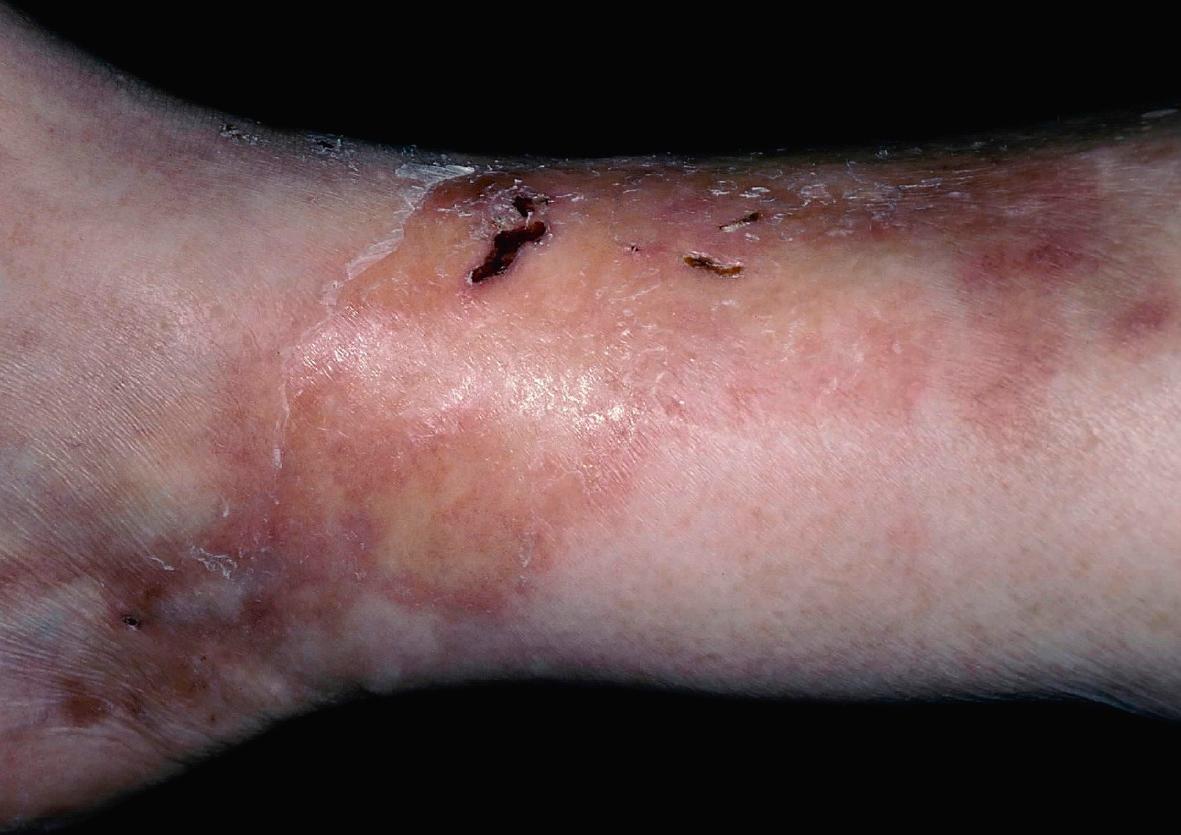
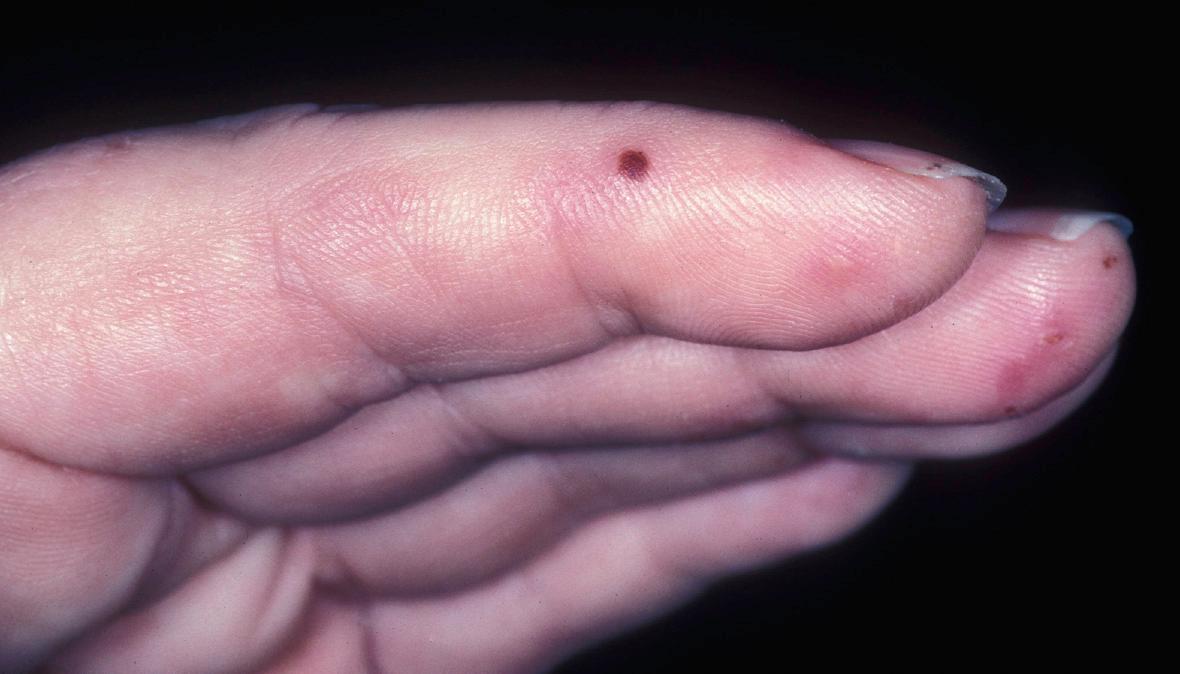
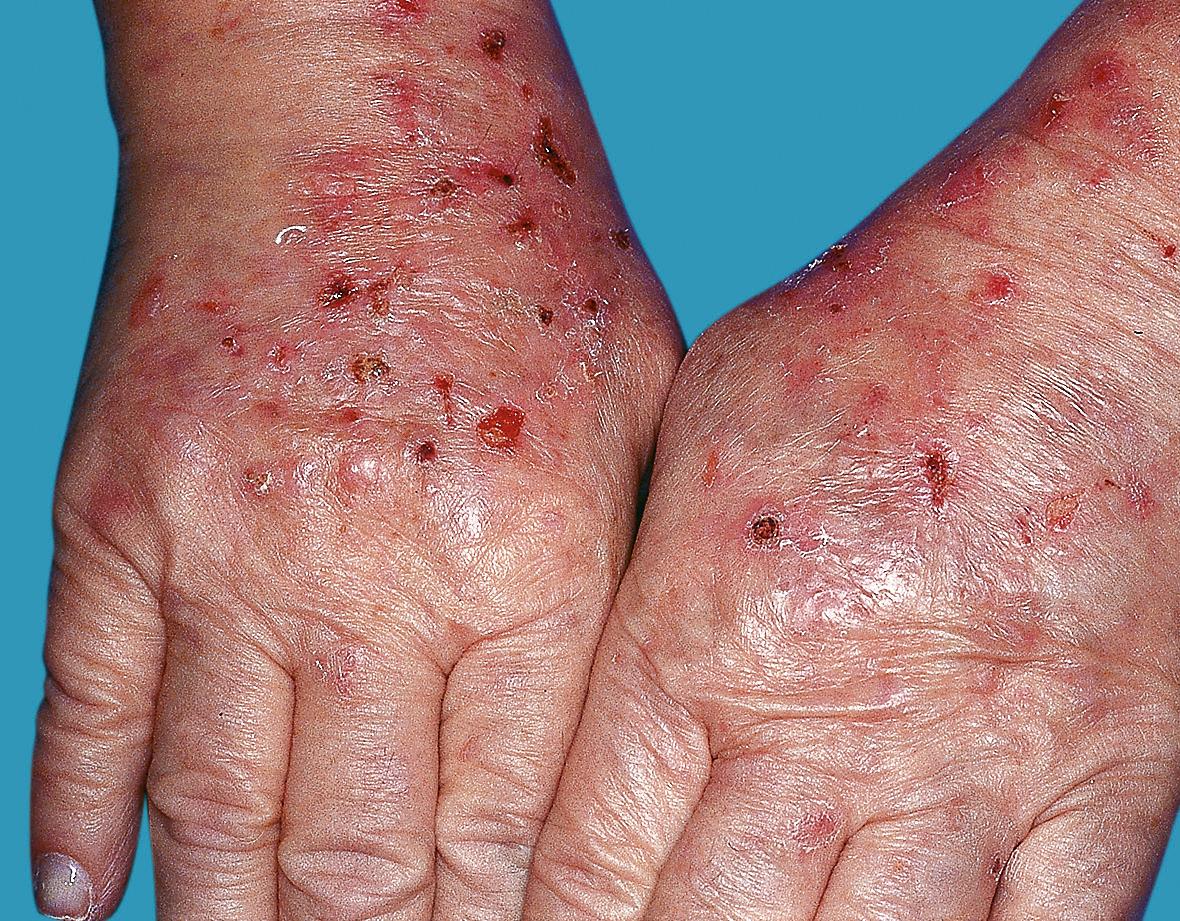
Sjögren syndrome is an autoimmune disorder that is characterized by keratoconjunctivitis sicca and xerostomia (see Table 45.4 ). In primary Sjögren syndrome, vascular inflammation within the skin (e.g. small vessel vasculitis, hypergammaglobulinemic purpura) can occur even before the clinical diagnosis of Sjögren syndrome has been established. Some patients from the Far East, including Japan and the Philippines, have been described with “annular erythema of Sjögren syndrome”. There is ongoing debate as to whether this disorder is unique to Sjögren syndrome or if it is, in fact, a form of subacute cutaneous lupus erythematosus . Secondary Sjögren syndrome occurs in patients with other rheumatologic diseases, including rheumatoid arthritis, dermatomyositis and systemic sclerosis. It is important to remember that the diagnosis of Sjögren syndrome is one of exclusion, and that other conditions can cause xerostomia/xerophthalmia, including chronic GVHD, sarcoidosis, primary systemic amyloidosis, hepatitis C viral infection, and HIV disease.
Become a Clinical Tree membership for Full access and enjoy Unlimited articles
If you are a member. Log in here